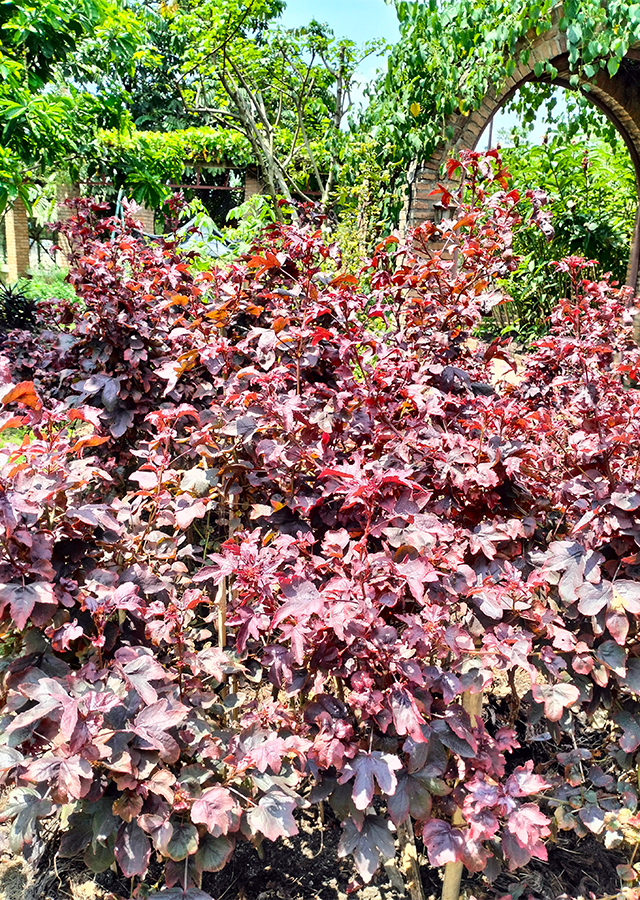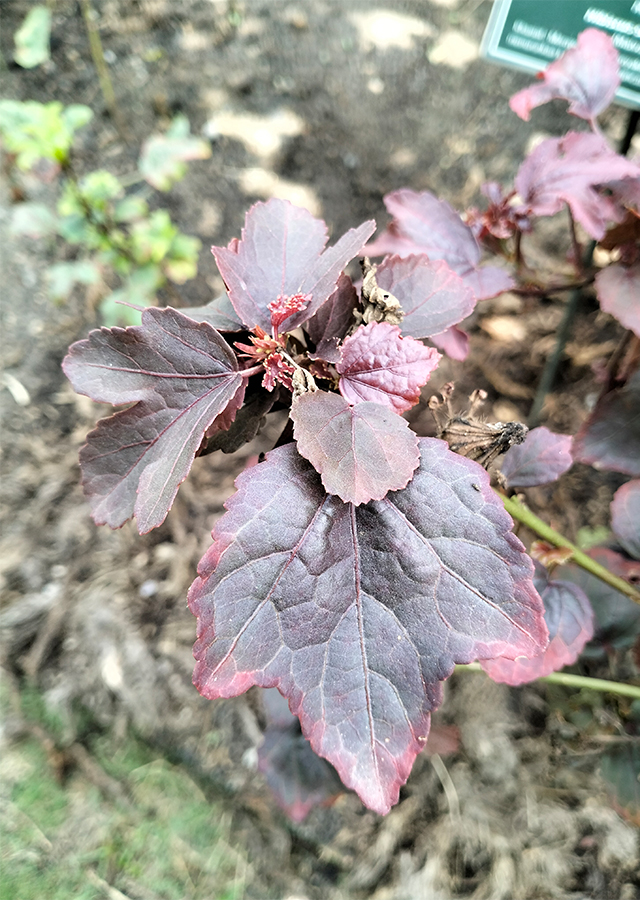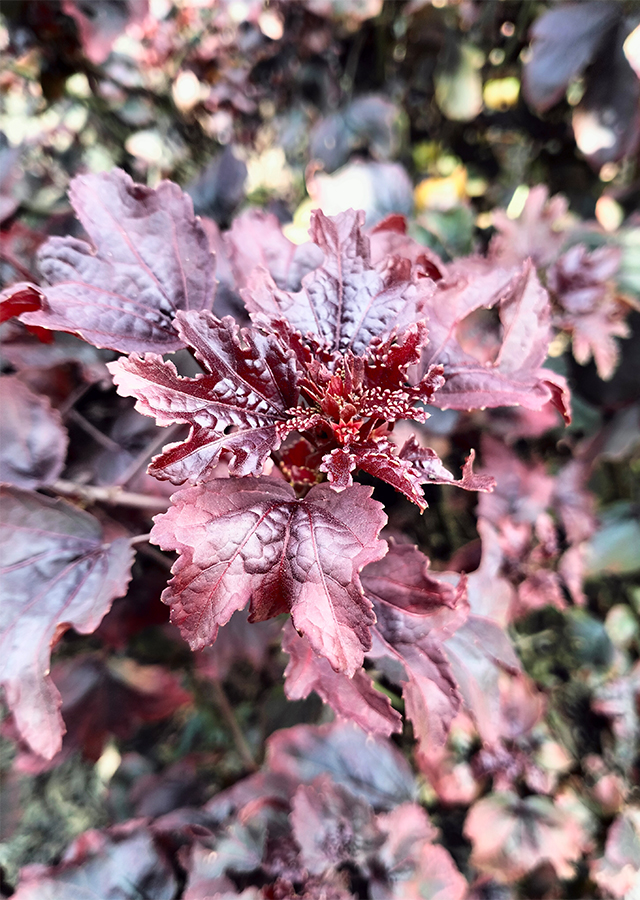Traditional Herbs from Hibiscus acetosella
treat_anemia
- Prepare enough fresh leaves of red leaf rosella, wash them thoroughly.
- Soak and wait for a few moments.
- Strain then drink.
treat_the_body_of_sick_children
- Take fresh leaves of red leaf rosella wash enough until clean.
- Crush until it becomes a paste.
- Put the leaf paste in cold water.
- Use it to bathe babies and children with body aches.
What is Hibiscus acetosella Looks like??



Parts of Hibiscus acetosella that could be used
- Leaf
Hibiscus acetosella Distribution
Hibiscus acetosella is one of the accepted species, and its native area is Burundi to Southern Tropical Africa (Sudan, Uganda, Tanzania, Cote D'Ivoire, Cameroon. Congo, DR Congo, Angola, Zambia, Zimbabwe, Mozambique, Mauritiu). Hibiscus acetosella is an amphidiploid species which probably originated from hybridization between Hibiscus asper Hook.f. and Hibiscussurattensis L. H. acetosella is used medicinally, has environmental and food uses. Introduced as a vegetable or ornamental plant to Southeast Asia, H. acetosella is sometimes grown as a colorful temporary hedge. H. acetosella leaves can be eaten raw or cooked. Sour taste with a slimy texture, can be added to salads or used in soups, stews etc. The red flowers and possibly also the leaves are sometimes used to make tea, somewhat similar to the use of the red petals of Hibiscus sabdariffa. The roots are also edible but are very fibrous.Agroecology of Hibiscus acetosella
Hibiscus acetosella is found in the vast tropical regions of Africa, usually growing at low to medium altitudes. This plant can also be grown as an annual in warm climates. Grows best in areas with good rainfall. Does well in sunny positions, but prefers shade. Grows in all types of soil but prefers fertile, humus-rich soil that is well-drained.
Morphology of Hibiscus acetosella
- The stem is smooth to sparsely hairy.
- The simple alternate leaves are slightly glossy and pubescent, dark red in color and the shape of the lower leaves is usually shallow to very palmately with 3 to 5 lobes but the upper leaves become undivided, with distinct nectaries located at the base of the midrib. Petioles are dark red.
- The flowers are solitary and bisexual, located between the leaf axils with five petals that are pink and last only a day. The petals are burgundy with a dark purple center, giving the flower The characteristic \"eye\" in the center. Self-pollination is most common for H. acetosella flowers but outcrossing by insects can also occur.
- The fruit is a red, ovoid capsule with many seeds.
- Reniform (kidney-shaped) seeds ) becomes round, dark brown when ripe, and verruculose (very small verrucose, i.e. bearing wart-like protrusions on the surface).
Cultivation of Hibiscus acetosella
- Propagated by seeds and stem cuttings.
- Sow seeds in place or in containers. Germination is usually quite rapid. Transplant container-grown seedlings into individual pots when they are large enough to handle and transplant into permanent positions when they are 10 cm tall or more.
Hibiscus acetosella, more details :
Chemical Content of Hibiscus acetosellaPhenolic compounds, flavonoids and anthocyanins.
Benefits of Hibiscus acetosella
Post-fever tonic and as a treatment for anemia, body aches in children. Has anti-inflammatory, antimutagenic, antioxidant and antibacterial activity.
Simplisia of Hibiscus acetosella
Another Facts for Hibiscus acetosella :
Synonym of Hibiscus acetosellaHibiscus eetveldeanus De Wild. & T.Durand
Habitus of Hibiscus acetosella
Bush. Annual or perennial shrub with a maximum height of 2-2.5 m
Habitat of Hibiscus acetosella
- Forest
- Bushland
- Land
No comments:
Post a Comment